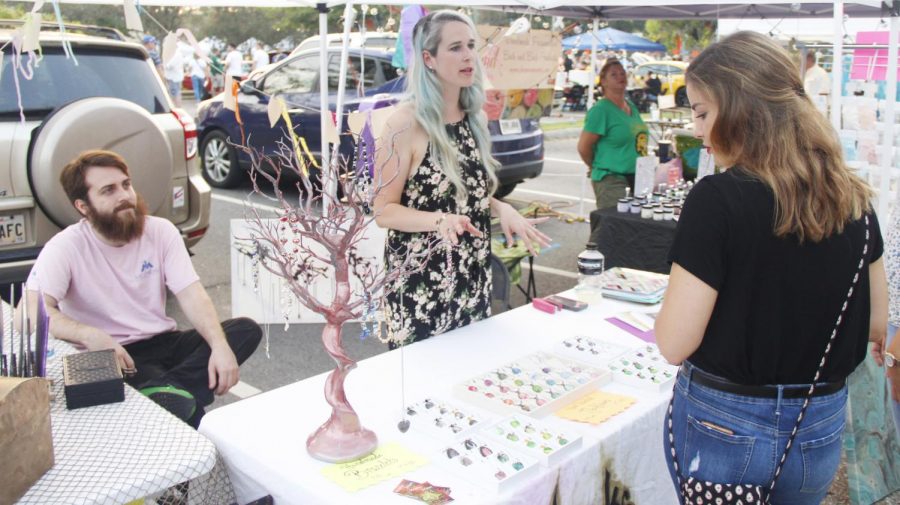Essentials for selling artwork
File Photo/The Lion’s Roar
Crystal Rutherford, a 2013 alumna, puts her artwork on sale at “Hot August Night.” For her, sales require a presence both in person and online. Artists can find different options for pricing and selling their works.
In order for an art business to prosper, pricing and creativity are skills to keep in mind.
Numerous artists display their artwork to the public with the desire to promote and sell their pieces. Dr. Marc Settembrino, assistant professor of sociology, found his biggest struggle with selling his work was pricing.
“Trying to figure out how to price my work is difficult as I don’t want to give it away,” shared Settembrino. “I also don’t want to make it so expensive that people can’t afford it. Art is so subjective, and you never know how much someone is willing to pay for them.”
L’Oreal Willams, a freshman business administration major, discussed her personal pricing methods and the variance in pricing for different artists.
“I have a base that I set my prices on,” said Williams. “You have to charge for your time and your actual service. Also, I do prints for an extra price as well. There’s no set combination as everyone values themselves differently and their level of skill.”
Deciding on a location to sell art affects the prices that artists set for their craft.
“It also depends on the venue that you’re selling your work,” explained Settembrino. “If it’s a street festival, people may pay a certain price for an item. If it’s in a gallery, the art has a more official feeling and looks nicer to the audience. A person in a gallery may pay more than a street fair setting.”
Crystal Rutherford, a 2013 alumna, believes it is vital to partake in both online and in-person sales.
“I do drive sales through the Facebook page, especially commission work, but, I’ve had more overall success with arts and craft shows and markets when it comes to more immediate, on-the-spot sales,” stated Rutherford. “Once you get out there and make yourself known, you’ll eventually get a following, repeat customers and plenty of new ones through word of mouth.”
Before the process of marketing and selling can begin, however, it is important to create a memorable and creative brand that is unique to one’s personal artwork.
“The original studio name I had chosen was one that didn’t embody what my art was really about,” shared Rutherford. “A few years ago, there was a point when I decided that it was time for a better overall look and name, something that was recognizable and really embellished who I was and wanted to be as an artist. I needed something that was going to brand me better as an artist. This was when the name Works of the Muse was born.”
Rutherford wants to continue to make improvements in her marketing methods to improve her future sales.
“I’m planning to very soon set up my own Etsy account, which should help generate some new clientele in the world of online sales and marketing,” explained Rutherford. “I want to work towards becoming more involved in the online and social media worlds and increase the frequency at which I’m posting and sharing my work. I’m also going to be on the lookout for new spaces to display some new work and try to expand on that.”
When it comes to selling artwork to the public, it is necessary for artists to persevere and not underestimate their work.
“Don’t ever sell yourself short,” said Rutherford. “Practice your craft as often and as diligently as possible. Perfect it, become a master of it, and then keep working at it.”
Your donation will support The Lion's Roar student journalists at Southeastern Louisiana University.
In addition, your contribution will allow us to cover our annual website hosting costs.
No gift is too small.







